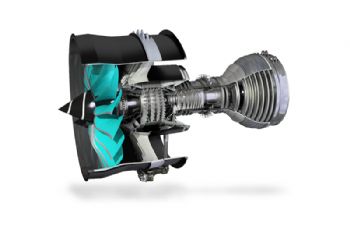
Rolls-Royce’s Advance3 engine is helping to pioneer the future of civil aerospace, with 3-D printed parts and the introduction of new materials helping to lead the way.
The technology demonstrator engine is proving both technology and a new core for Rolls-Royce’s UltraFan engine design, which will be available from 2025.
Advance3, which comprises some 20,000 parts in total, has achieved more than 100hr of testing, with initial results showing excellent performance from parts made by 3-D printing (ALM — additive layer manufacturing), as well as from ceramic matrix composites (CMCs).
ALM allows engineers to create new designs for parts, and for those parts to be made and redesigned more quickly, while CMCs last longer in high temperatures and are lighter than metal alternatives.
Engineers have downloaded millions of data points from the tests, which began last November and saw the engine achieve full power in July.
Advance3 plays an important part in delivering the ‘IntelligentEngine’ — Rolls-Royce’s vision for the future — as it builds on pioneering technology and digital capabilities to give important customer benefits.
Ash Owen, Rolls-Royce’s chief engineer for civil aerospace demonstrator programmes (
www.Rolls-Royce.com), said: “Testing so far has been completely seamless, which is an outstanding achievement when you realise that this is an engine incorporating a range of new technologies as well as a brand new core architecture.
"We have completed our first phase of testing and are analysing the result. We like what we see from the performance of CMC and ALM parts.”
Rolls-Royce has been at the forefront of innovation with ALM, flying the world’s largest 3-D printed aerospace structure within the Trent XWB-97 engine that was tested in 2015.
ALM also increases production efficiency and reduces component weight, while providing the ability to manufacture designs and shapes that would not be possible using conventional methods.